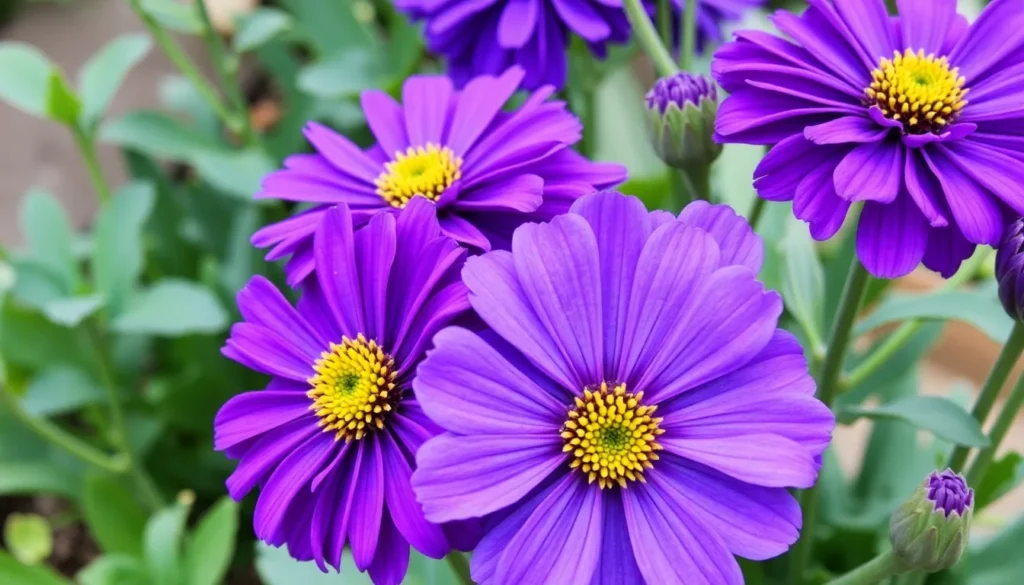Mistakes to Avoid When Growing Cut Flowers

Imagine wandering through your garden, selecting vibrant blooms to brighten your home or to gift to a friend. The sheer joy of cutting a bouquet of sweet peas, a lavish display of dahlias, or even sprigs of fragrant greenery can be one of the greatest pleasures of gardening. A cutting garden may seem like a dream reserved for grand estates, but even small spaces can yield beautiful flowers. With the right approach and knowledge, you can turn your garden into a source of stunning arrangements that bring a splash of color and fragrance into your life. However, there are essential dos and don’ts to consider when establishing your cutting garden.
Start small and choose wisely
The allure of a cut flower seed catalog can be overwhelming, presenting a dazzling array of blooms that beckon you to grow them all. However, flower farmer and florist Georgie Newbery suggests a strategic approach: think about the varieties that truly inspire you and will thrive in your garden. Consider the following:
- What flowers invigorate your mornings?
- Which scents would enhance your living space?
- Do the chosen flowers harmonize well together in a bouquet?
Florist Milli Proust emphasizes the importance of starting small, especially in limited spaces. Certain plants, such as cosmos, zinnias, dahlias, and sweet peas, are known as “cut and come again” flowers. This means that the more you cut, the more they will bloom, providing you with an extended flowering season.
One common pitfall is forgetting where you've planted your flowers. To avoid this, Sean Pritchard recommends creating a simple diagram or chart to keep track of each variety's location in your garden. This will save you frustration later when you can't remember the name of that stunning bloom that caught your eye.
Don't overlook the importance of filler flowers and foliage. While it's easy to focus on the showy blooms, having complementary plants can enhance your arrangements. Perennials are particularly valuable in this regard, as they provide reliable foliage and flowers season after season. Camila Romain from Wolves Lane Flower Company highlights that perennials are often more resilient to varying climates compared to annuals.
For example, Alchemilla mollis, with its vibrant lime green clusters, makes a stunning addition to summer bouquets, and nasturtiums offer both beautiful blooms and eye-catching foliage.
Plan your garden layout
When setting up your cutting garden, it’s vital to consider diversity. Camila Romain advocates for planting a mix of species rather than a single type. This approach not only enhances the aesthetic appeal of your garden but also promotes resilience against pests and diseases. Additionally, planning for succession is crucial. Georgie Newbery points out that not all flowers bloom at the same time; therefore, stagger your sowing and planting to ensure a continuous supply of cut flowers throughout the growing season. Mapping out your planting schedule at the beginning of the season will help fill any gaps as the season progresses.
Condition your blooms for longevity
After investing time and effort into growing your flowers, taking care in how you cut and condition them is essential to maximize their lifespan. Pritchard advises cutting flowers during the cooler parts of the day, either early morning or late evening, to minimize stress on the plants. Once cut, place them immediately into lukewarm water and store them in a cool, dark place for a few hours or overnight to help them rehydrate before displaying them.
The joy of experimentation
Ultimately, the most important aspect of growing cut flowers is to enjoy the process. Picking blooms from your garden is a rewarding experience, and it’s essential to remember that perfection isn't the goal; experimentation is key. Each mistake is a lesson learned, opening the door to new opportunities in your gardening journey.
Favorite flowers for cutting
Here are some popular choices among gardeners for creating beautiful cut flower arrangements:
Annuals
- Sweet Peas - Renowned for their fragrance and variety, they thrive with regular watering and consistent cutting.
- Cosmos - Easy to grow, with varieties like ‘Purity’ offering stunning white blooms. Early pricking out leads to robust stems.
- Nasturtiums - Self-seeding and vibrant, these flowers also serve as ground cover, making them a versatile addition to any garden.
Perennials
- Knautia macedonica - This hardy flower boasts deep burgundy blooms, providing an excellent color contrast in arrangements.
- Alchemilla mollis - A low-growing perennial that adds texture and softens bolder colors in bouquets.
- Dahlias - Available in various shapes and colors, dahlias are beloved for their stunning blooms, such as the pink ‘Labyrinth’ and the striking Honka varieties.
If you're looking for more insights into establishing a cut flower garden, consider watching this informative video that covers essential tips:
With a thoughtful approach to selection, planning, and care, your cutting garden can flourish, providing you with endless joy through vibrant arrangements. Embrace the journey, and let your garden be a canvas of creativity and beauty.
En este sentido, te invitamos a ver un video que detalla los errores que debes evitar al cultivar flores cortadas para asegurar un crecimiento exitoso.
 How do I make my plants healthy again with proven tips
How do I make my plants healthy again with proven tips What is a quick trick for happier plants: Expert tips for thriving greenery
What is a quick trick for happier plants: Expert tips for thriving greenery How often should I water a plant for optimal growth?
How often should I water a plant for optimal growth? Unlocking Your Plant's Needs: How Can I Tell What My Plant Needs?
Unlocking Your Plant's Needs: How Can I Tell What My Plant Needs? Does sugar water help dying plants: myth or fact?
Does sugar water help dying plants: myth or fact?If you want to know more about similar articles like Mistakes to Avoid When Growing Cut Flowers you can visit category Plant Care.